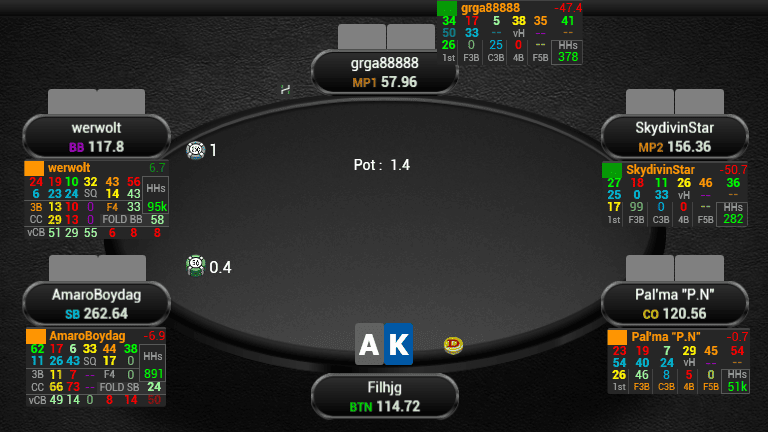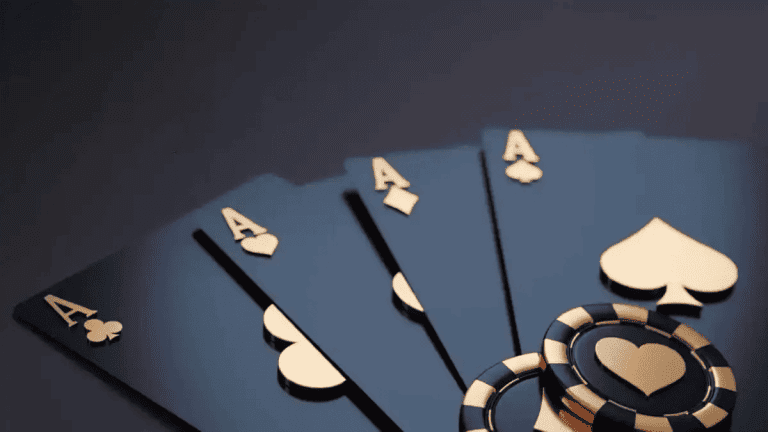In March 2010, a virtually unknown Hungarian player made his mark in the game’s most prestigious weekly tournament. The $215 buy-in PokerStars Sunday Million attracted a staggering 10,123 entrants that week. Among them was Camillo30, a player with no prior major results and just 76 tournaments to his name—his biggest recorded win being a modest $219.
But this time, everything aligned. By the time the final table was set, Camillo30 held the chip lead and carried it deep into the closing stages. Eventually, he faced MAE9690 heads-up, starting at a 3:1 chip disadvantage. In the final hand, Camillo30 shoved with Q♣-T♣, and MAE9690 called with A♦-4♦. The board ran out A♥-2♥-5♦-3♦-8♥—no help for the Hungarian—and his unforgettable run ended with a runner-up finish.
While the title narrowly slipped away, it was still the kind of result most players only dream of. Despite settling for less than the official second-place prize due to a late four-way deal, Camillo30 walked away with $176,959—a staggering amount for someone who had barely ventured beyond the micro-stakes just weeks earlier.
Flush with confidence and still riding the high of his Sunday Million run, the Hungarian amateur seemed to take his sudden success at face value. The numbers told a seductive story: six figures won, a deep run in the game’s most iconic weekly tournament—surely, he had what it took.
But poker is a game of illusions. In the short term, variance can blur the line between skill and luck, sometimes elevating the inexperienced over seasoned professionals. Unlike chess, where the stronger player almost always prevails, poker allows anyone to win on any given day. It’s part of the game’s beauty—but also its most dangerous trap.
Camillo30 didn’t just take a shot—he made a leap. Rather than gradually moving up through the stakes, he put his entire bankroll on the line and jumped into NL1000 cash games. These tables sat just below the infamous “nosebleeds” but were packed with elite regulars.
The High-Stakes Dream
In the weeks following his breakthrough, Camillo30 began playing NL1000 on PokerStars—games filled with some of the most technically skilled and battle-tested players in online poker.
His arrival drew immediate attention. Waiting lists swelled as soon as he joined, and games often emptied when he logged off. Regulars instantly recognized the opportunity—including PokerStars Team Pro Randy "nanonoko" Lew, one of the most consistent and respected players at these stakes.
Camillo entered with the same confidence that had carried him through the Sunday Million. But deep-stacked cash games demanded a different kind of sharpness—subtle post-flop adjustments, mental resilience, and an ability to navigate constant pressure from well-prepared opponents.
Chasing Losses: A Deeper Descent
On paper, Camillo30’s Sunday Million payout should have been more than enough to take a shot at NL1000—within reasonable limits. With nearly $177,000 in his account, he had the bankroll. But what he lacked was self-awareness—and the discipline to follow even the most basic principles of bankroll management.
And that made all the difference.
Taking a shot in itself wouldn’t have been a fatal mistake. With a clearly defined stop-loss—say, ten to twenty buy-ins—the experience could have been painful but educational. One of those stories you tell your friends later: “Yeah, I once sat with nanonoko.” Even after losing $20,000 to $40,000, he would’ve still had over $130,000—more than most online players ever see in their accounts.
But Camillo didn’t stop.
As the losses piled up at NL1000, he refused to accept what they revealed. Instead of stepping down, he moved up to NL2000—then, even more desperately, to NL5000—hoping to recover his money at increasingly higher stakes. It was no longer about proving he belonged. It was about trying to undo the damage.
And in doing so, he didn’t just dig the hole deeper.
He buried the bankroll entirely.
A Glimpse Into High-Stakes Reality
One hand from April 13, 2010, offered a clear look at just how unforgiving this environment could be. Sitting in the small blind with over $10,000 behind, Camillo 3-bet to $200 after a standard $60 open from Maksimus1978, who had a full $2,000 stack. Maksimus called.
The flop came 4♠ A♥ 6♥. Camillo checked and called a $250 continuation bet. The turn brought the 5♦. Another check from Camillo, another bet from Maksimus—this time $500. Camillo responded with a check-raise to $1,900, putting his opponent all-in. Maksimus snap-called and tabled 8♣ 7♣ for a turned straight. Camillo showed A♣ 5♠ for two pair. The Q♥ on the river sealed the loss.
It wasn’t a reckless line—just a good hand beaten by a better one. But in high-stakes cash games, even close spots come at a price. And when those small losses stack up, they begin to reveal a deeper issue: the gap between confidence and competence.
A Community Watches in Real Time
On April 8, 2010, a thread titled “Someone please talk some sense into Camillio30!” was started on PokerAkademia.com, the largest Hungarian poker community site. The forum members watched in shock and disbelief as they discussed how Camillo30 was burning through the massive Sunday Million prize he had earned just weeks before.
The initial posts quickly noticed the problem:
“If anyone knows Camillo30, it would be great if you could talk some sense into him before it’s too late, because he’s losing the money he won for second place in the SM in a very reckless way!”
As the posts continued, the tone shifted:
“Just because someone gets lucky with a win like that and has the bankroll to play higher stakes doesn’t mean that’s where they should start...”
“It’s his business. Though, that graph is really ugly.”
“LoL. This is what happens when someone gets really lucky and pulls in a huge amount of money, then loses their luck. Honestly, he’s not a bad player, and I’ve always thought he’s luckier than most. But it seems like he’s lost his mind :D”
Another user added:
“If I’m not mistaken, he won over $170k. It’s not too late to stop the tilting...”
“Cake! I wrote this with good intentions because I really hope he doesn’t blow a beautiful result—something I’ve only dreamed of since I started poker—in just 1–2 months.”
And the warnings kept coming:
“Sad case indeed! Hasn’t he even taken any of the winnings out yet? A lot of people lose their heads after their first success.”
“Reporting in: this morning he was down $80K, and as of 12:40 AM, his losses are at $113K. A few more hours and he’ll have blown through the entire $170K win. Now that’s what I call a mix of tilt and stupidity!”
Other users reflected on what they would have done differently:
“I don’t feel sorry for him either, but at least he should be given the chance to prove us wrong. If I had won $170,000, I’d leave $10,000 online and live off the remaining $160,000 for the next 20 years. :D”
“If he had withdrawn $150,000, even just the 5% annual interest would’ve been enough to live comfortably—not to mention he’d still have a $20,000 bankroll left to grind NL200–NL400 for extra profit... That’s probably what I would’ve done in his place. But hey, we’re not all the same.”
Then the thread took a more personal turn:
“Hi guys! I heard a thread was started here about Camillo30… I read everyone’s opinions, and I can’t help but add my thoughts. Camillo30 is my personal friend—actually, my best friend! He’s 25, and he’s not blowing the money because he’s a millionaire! As crazy as it sounds, and as unbelievable as it is, he’s been a winning live player for years!”
And even he admitted:
“However, the internet is not for him! This ‘rampage’ happened because after a weekend of partying, he sat down to play on PS and lost, I think, 12K at 5/10! He tried to recover, but then lost another 20K! Then came the level jump (which was, of course, the biggest mistake), but he did it—$25/$50...”
Rock Bottom, Then Silence
By the end of April 2010, it was over.
The forum kept updating his status day by day—until there was nothing left to update. The once six-figure bankroll had completely vanished.
One final post summed it up in a single word:
“He’s busted.”
Another added:
“That’s it.”
And a third:
“A cautionary tale… That’s how these gamblers are.”
Then, in November 2010, a quiet post resurfaced:
“Camillo30 is back. :) Ran into him this morning at NL5, and he was also playing a $4 tournament.”
From $177,000 and a Sunday Million final table to micro-stakes in just over half a year.
Lessons Written in Chips and Dust
Camillo30’s story is not unique—but it’s rare to see such a rise and fall play out so publicly, in real time, and with such brutal clarity.
It’s the kind of arc that reveals poker for what it truly is: not just a game of cards, but a test of emotional control, discipline, and self-awareness.
A single lucky run can change a bankroll overnight. But it takes structure, humility, and restraint to transform a windfall into lasting success.
The difference between a spike and a breakthrough isn’t in the cards—it’s in what comes next.
And that might be the real game.

















0 comments